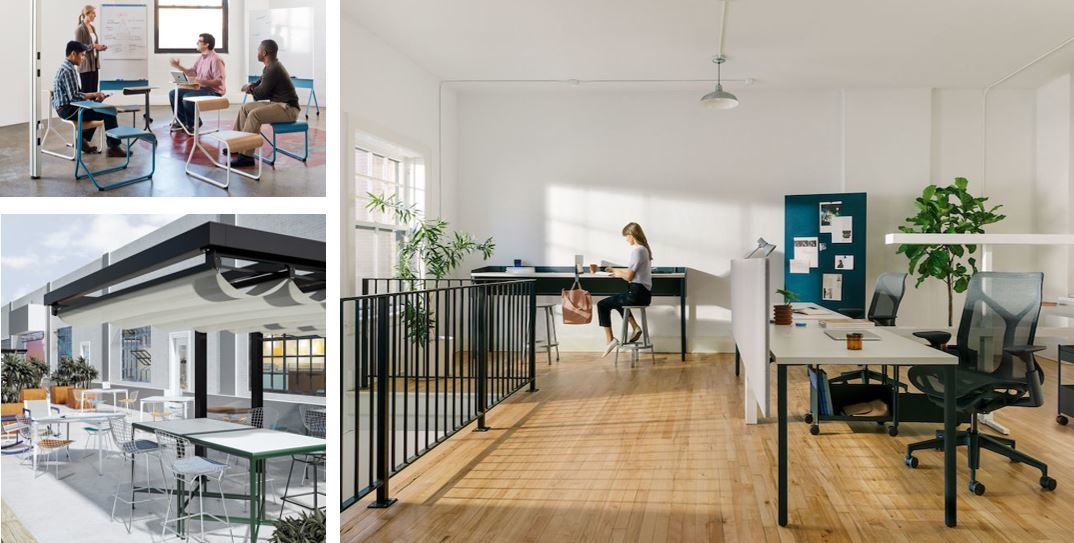08 - Sep - 2022
The Ever-Changing Role of the Workplace
Since the coronavirus pandemic first hit in early 2020, the impact it has had on the workforce and workplace has proven to be one lengthy disruption after another. And while it is proving out to not be all positive, workplace flexibility is here to stay for the foreseeable future.
There are signs the sentiment among employers and employees may still be changing. The percentage of the American workforce that is teleworking is down to 7.4% (June 3, 2022, Employment Situation Summary, U.S. Bureau of Labor Statistics) from a pandemic era high of 35%.
There continues to be a growing number of corporate executives who want to see a complete return to the office. In a March 2022 survey conducted by the Cleaning Coalition of America among more than 200 New York-based executives, they found 76% view in-person work is essential. A University of Chicago study found remote workers are putting in longer hours with diminished productivity. And, Microsoft found their workers across business units feeling less interconnected and that workers identified it was more difficult to communicate more complex or nuanced information with their co-workers.
The Current Status of Return to Office Sentiment.
CBRE’s Spring 2022 Occupier Survey among 185 corporate real estate executives show a number of clearly defined trends.
Among the study participants, 62% of respondents indicated they are already encouraging a more regular return to the office or will be within the second half of 2022.
While 31% will require a return, 53% of the survey respondents indicated there would be some degree of discretion between employees and management.
Only 8% plan to be virtual-first or fully remote. The remainder want their workers in the office at least half of the time, even with a hybrid policy in place.
Ultimately, only 9% of respondents expected to maintain the same office footprint over the next two years. 39% expect to expand their footprint, largely driven by anticipated growth.
52% expect to contract their footprint since they don’t expect to require the same amount of space with fewer people in the office at any given time.

What Does This Mean for Workplace Design?
With such a high percentage of employers expecting to downsize their office space, the impact on office design becomes clear. Employers and employees still view the role of the office as essential. It is where teams feel most connected to each other and the mission of the organization. It fosters collaboration and innovation in ways that can’t be replicated remotely through online meetings. And presence in the office fosters culture and enhances employee engagement helping reduce turnover.
And for employees, they miss the camaraderie with their co-workers. Getting out of the house and into the office spurs more organic and spontaneous collaborative moments. It creates bonds and builds trust between co-workers and with their supervisors. It will help them address their meeting fatigue and control the number of working hours.
Designing the space for a smaller footprint while addressing the pain points of employers and employees will apply the following principles of design.
More Multi-Purpose Space and Furnishing
Since the office will be more geared toward collaboration, there will be a reduced amount of square footage dedicated to individual workspaces and more of the space will be allocated to collaboration. But people will still want to be able to focus on their work. Furniture that can be set up and moved that can serve multiple purposes will become even more important. Add to that the flexibility architectural products can bring to the office space and any given space can easily transform from a collaborative space to one that creates privacy to allow employees to concentrate and focus, one of the main benefits of working from home.
Continued Dependency on Leading Technology Products
Employers will adopt new forms of technology that will drive more consumer-oriented experiences in the workplace. Technology such as employee experience apps that allow for real-time feedback from employees will become more common. Technologies that give their employees the confidence that health and safety concerns are being addressed including air quality sensors and touchless technologies will become more prevalent. And tech products that bring a touch of the smart home into the workplace that allow employees to see what spaces are available, reserve space, and enhanced video conferencing technologies will all be featured.

Bringing More Touches of Home into the Workplace
People have gotten rather comfortable working from their couch or at their dining table. They got used to being able to shut their eyes and rest or meditate for 10-15 minutes as a break in their day. Mother’s Rooms for nursing mom’s, collaborative spaces furnished with sofas and comfy chairs rather than conference room tables, and quiet spaces where people can go to regroup and restore will continue the trend that’s been going on even prior to the pandemic.
Conclusion
Ultimately, where sentiment ends up is likely still a way away. Will hybrid take hold on a sustainable basis, or will the pendulum swing back closer to where things were pre-pandemic? Will employees, especially younger ones, realize they’re missing out on building important connections within their organization? Will they see that employees who are spending more of their time in the office are getting better opportunities and promoted at higher rates? Or will the tradeoff remain worth it to them for the added conveniences afforded by working from home.
But, by applying these principles to office design, even in a smaller footprint, can make the workplace somewhere more appealing for them and make it a place they look forward to going to better connect with their colleagues and managers.
For a free workplace design consultation to help you with your return to the office plans, please contact Dan Tramelli at 314.686.6976 or dtramelli@ciselect.com.
Next Article
